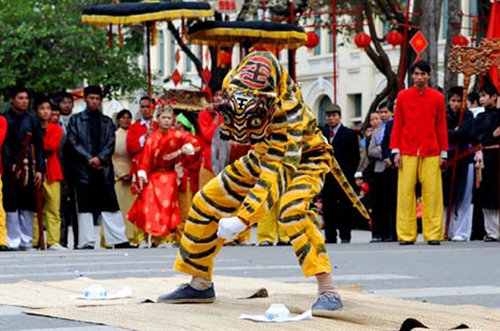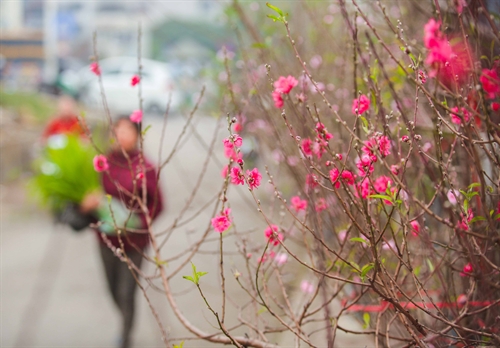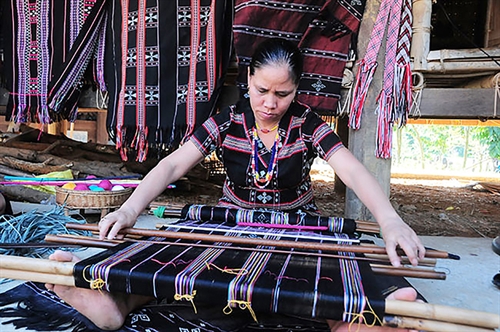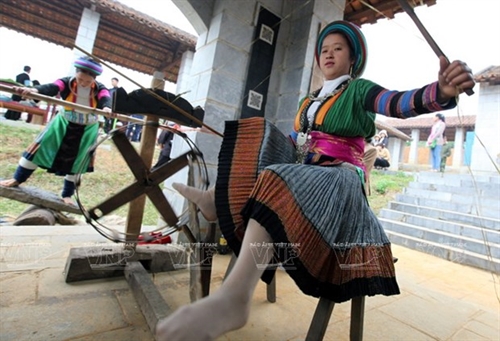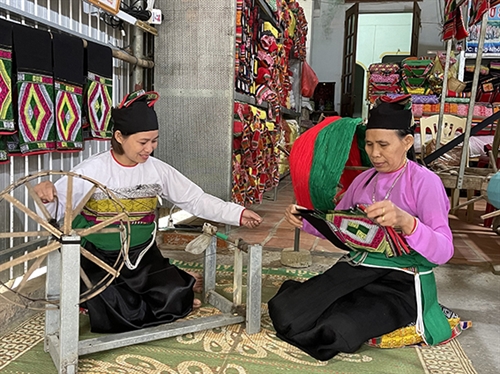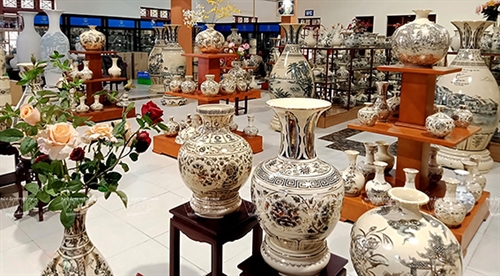When coming to Thuy Xuan incense-making village - the oldest of its kind in Vietnam, which is located about seven kilometers to the southwest of the ancient imperial city of Hue, visitors are often impressed by the aroma of aloeswood as well as the image of countless bouquets of bamboo incense sticks of various colors being sundried along the village’s roads.
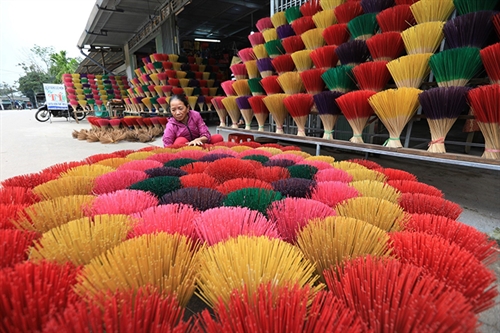 |
| A corner of Thuy Xuan incense-making village __Photo: VNA |
Incense sticks have long been considered by Vietnamese people a tool for connecting the land of the living with the divine world. Lighting incense sticks on the ancestral altars or Buddha shrines on special occasions like Lunar New Year Festivals has long been an indispensable cultural and religious activity of the Vietnamese.
The incense-making craft in Thuy Xuan village is believed to be dated back to the Nguyen Dynasty in the 1800s. In the past, local villagers used to supply incense sticks to the Court, the nobility and common people in Thuan Hoa-Phu Xuan region, which is now Thua Thien-Hue province. The traditional craft has been passed down for generations of Thuy Xuan villagers, not only providing them a livelihood but also constituting a part of their spiritual life.
Thuy Xuan village’s products are diversified, ranging from incense sticks to incense cones and incense coils of different aroma such as cinnamon, citronella and other fragrances. However, this is the aloeswood that makes the name of the village and its aloeswood incense sticks are most preferable for their gentle, pleasant and long-lasting scent.
 |
| Ingredients are mixed together into aromatic paste, the most important material for making incense sticks__Photo: VNA |
The making of incense sticks must go through a traditional process of various steps, including preparing raw materials, mixing aromatic paste and rolling the paste around the bamboo sticks.
Bamboo, aromatic powders and glue powder are important materials to make hand-rolled incense sticks. Thuy Xuan villagers often take bamboo from Nam Dong, Binh Dien or Phong Son forests. They chop bamboo internodes into thin, equal and smooth sticks, soak them in water for many days and then dry them in the sun. After bamboo sticks become completely dry, they are tidied into bundles and partly dipped in hot liquid dyes for several times until the lower portion of every bamboo stick gets the desired color shade, and then once again dried to the sun. In the past, only brown and red dyes were used, but nowadays incense sticks may be found in various colors such as purple, green and yellow.
 |
| Japanese tourists try their hand at making incense sticks __Photo: Thanh Giang/VNA |
To ensure the quality of their products, Thuy Xuan villagers use only natural non-toxic ingredients to prepare aromatic paste, the most important material for making incense products. They are pine buds, cinnamon barks, clove roots, eucalyptus barks, star anise pods and cardamom seeds. Dried pomelo skin and flower powders are sometimes added to the formula to enhance the fragrances. All ingredients are ground and blended well together with water, sawdust and glue powder, made of Indian laurel trees’ barks into a viscous mixture. The preparation of incense paste is considered the most difficult step because too much glue powder will make incense sticks stop burning abruptly while too much water will cause cracks on incense sticks. The scent of incense sticks depends on the amount of aloeswood or cinnamon powder added by incense makers and each family in the village has its own secret formula for the fragrances.
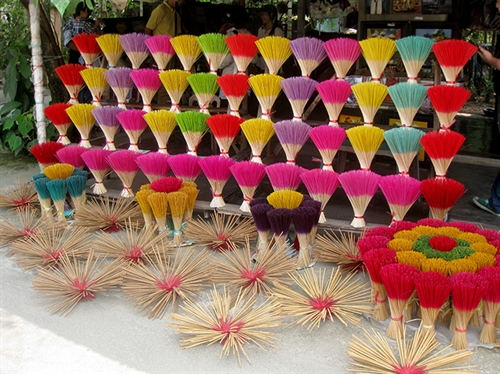 |
| Bouquets of colorful bamboo splits, the core of incence sticks, are sun-dried __Photo: Thanh Hoa/VNA |
